How to Get Rid of Fleas and Ticks on Your Sheltie
Learn how to get rid of fleas and ticks on your dog with a list of the best products for lasting relief. Includes info on flea and tick medicine, flea collars, flea powder, flea bombs and combs.
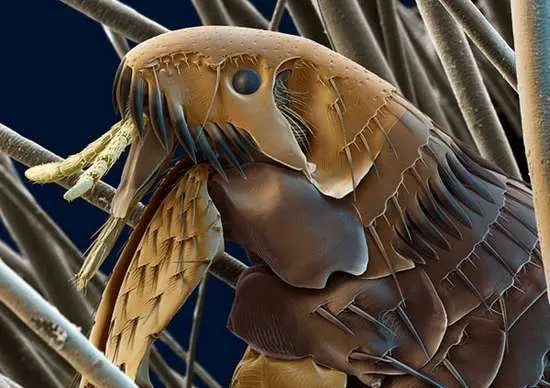
Flea under a Scanning Electron Microscope.
What Exactly Are Fleas?
Fleas can live happily in the Sheltie under coat, sucking blood through the skin which causes dreadful itching. Each flea can lay up to 4,000 eggs which perpetuates the havoc.
Besides causing intense itching and discomfort, flea bites can produce skin problems, infection, anemia, and in extreme cases can transmit tapeworms to your dog. They can also spread to humans and cause itchy red spots which bleed.
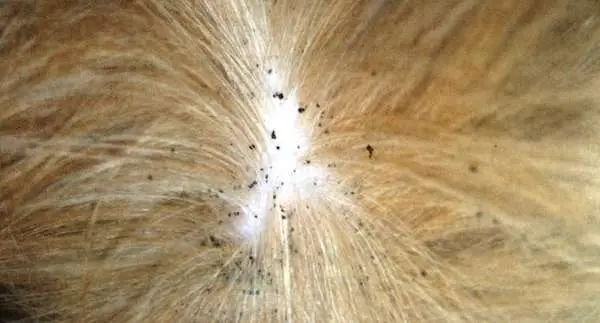
Flea poop on dog's fur.
What exactly do they look like? Fleas are flightless insects whose bodies are laterally flattened (from the sides). They are parasitic and can jump long distances relative to their size.
If you're wily enough to catch one with your fingers, you can't simply squash it—you must decapitate it with your fingernails instead. However, catching fleas manually is difficult and you certainly can't eradicate their eggs this way.
If your dog has fleas he'll scratch himself often and even whine or bite at his fur. His skin may show red marks and you'll notice black dots (flea poop) and white dots (flea eggs) nestled in his woolly undercoat. Read on for the best ways to get rid of fleas and flea eggs completely.
What Exactly Are Ticks?
Ticks are a similar parasitic insect but with some key differences. Their bodies are dorsally flattened (from the top) and they swell considerably when feeding. Ticks come in various sizes and go through three life stages: larvae, nymphs and adults. If they're particularly large and swollen it means they've recently had a blood meal.
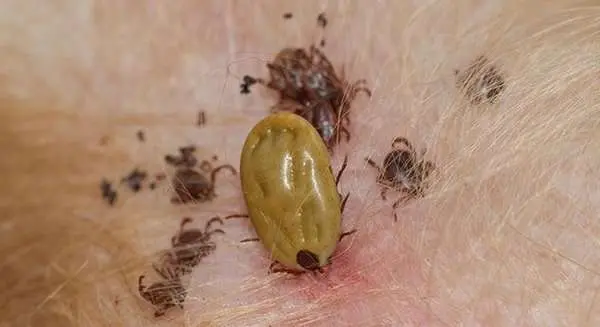
Ticks biting a dog's skin.
Ticks live in long grass and don't need to pass directly from host to host. They prefer to latch onto your dog's head, neck, ears and feet. Tick bites are often harmless but they can cause allergic reactions and infections and pass on Lyme disease to dogs and humans.
There are medications to kill and prevent ticks, as well as removal tools to manually pull them from the skin. It's not a good idea to remove them with your fingers as you may inadvertently leave the biting head embedded in your dog's skin. Read on for the best ways to get rid of ticks and prevent further infestations.
How to Get Rid of Fleas and Ticks
So how do you get rid of fleas and ticks? In the next section I've listed your best options among each treatment type and how it works.
Flea Treatment Pills
If your Sheltie is already infected and scratching, I highly recommend a fast-acting pill like Capstar Oral Flea Treatment which enters the bloodstream and kills the fleas within hours.
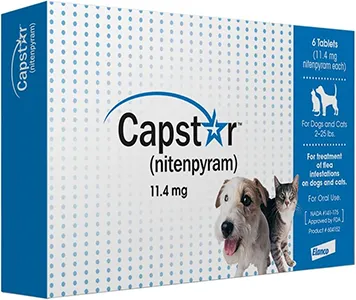
Flea Prevention Drops
For a long-term preventative, Frontline Plus is a reliable flea and tick treatment applied by parting the fur at the back of the neck and dropping the clear liquid directly on your dog's skin. It's absorbed into the bloodstream to kill any fleas and ticks that try to infect your dog.
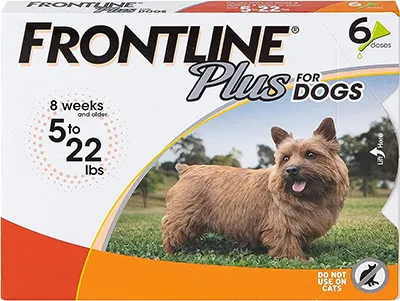
Importantly, Frontline breaks the lifecycle of fleas. If you've ever been plagued by fleas you know how frustrating it is to think you've killed them all, only for new hatchlings to appear the next day. This can happen over and over, which is why a chemical treatment is necessary.
Flea eggs go through four lifecycles: embryo, larva, pupa and imago (adult) over the course of 2-3 weeks in warm temperatures. However, they can lay dormant for in cooler periods. Frontline is the only flea treatment that kill fleas at every stage of the lifecycle.
Your dog can catch fleas any time he comes into contact with an infected dog or cat, so you'll likely run into them at some point. Frontline is proven to kill all the fleas and ticks on your pet within 12 hours and prevents re-infestation for one month.
Flea Spray
Once fleas are in your house, they may jump off your dog and lay eggs in the carpet. These eggs can lay dormant until conditions are ripe for another infestation. If your dog is suffering from repeat cases of fleas this is usually the explanation.
Vet's Best Flea and Tick Home Spray kills fleas, flea eggs and ticks without using harsh chemicals. Instead it uses certified natural essential oils and plant-based insecticides. Spray the solution around the home and directly onto your dog (from age 12 weeks and older). You can use this flea spray on furniture, carpets and dog bedding. What's more, it also repels mosquitoes.
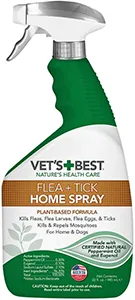
Tick Removal Tools
If your dog picks up ticks often, you'll want to buy a tick removal tool. Removing them with your fingers is risky because an imprecise grip can pull off the body while leaving the biting head attached to your dog's skin.
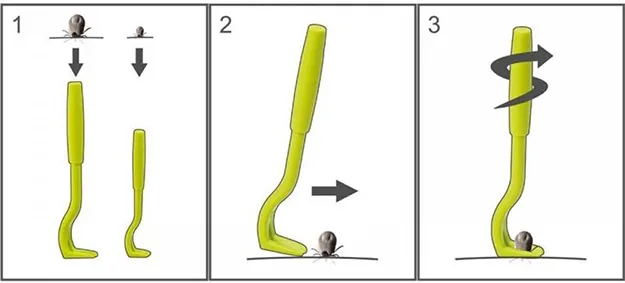
Tick removal tools come in various designs. The important thing is your technique so do follow the instructions on the packet. In general, tick removal tools require you to squeeze the fine-tipped tweezers right where the head joins the body to remove both segments. Some tools have an in-built v-shape to ensure you pull at the right spot.
Ticks are easier to spot that fleas because they become engorged after feeding and tend to favor certain parts of the body. However, repeat occurrences call for manual tick removal as well as a topical treatment like Frontline.
Flea Shampoos
Flea shampoos are medicated shampoos that clean the coat and kill fleas at the same time. You have to ensure a lather over every inch of your dog's body so you don't leave any safe haven for fleas. Check out Veterinary Formula's Medicated Shampoo.
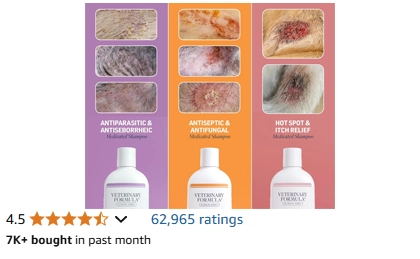
Take note that you need to do repeat shampoos all year round to kill any new fleas. If you're already a frequent and thorough dog washer this might suit you perfectly. However, if not, you might want prefer a topical medication like Frontline.

How to Groom a Shetland Sheepdog
Shetland Sheepdogs have luxurious double coats, which come with the responsibility of routine grooming. Here's my step-by-step guide to de-shedding the undercoat.
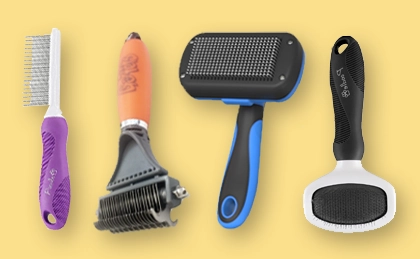
The Best Grooming Tools for Shelties
The Shetland Sheepdog's double coat demands 3 specialized dog brushes: a detangling and de-shedding comb, a fine-toothed comb for knots, and a slicker brush for finishing.

20 Things You Need for a New Puppy
You're getting a new puppy! Praise Wibblesniff! Life is good! Here are 20 things you need for your new teeny friend, from feeding bowls to grooming tools.

Blue Merle Shelties
Blue Merle Shelties have a color modification gene which alters the melanin pigment in their fur. Less pigment means less color, resulting in... yes, blue Shelties!

How to Clicker Train Your Sheltie
Clicker training is ideal for Shelties learning obedience, tricks, and agility. It's a gentle training method that uses psychological conditioning.

How to Train Your Sheltie
Shelties make dog training easy because they're intelligent and eager dogs. But problems can arise if you miscommunicate.

The Pros and Cons of Neutering
Neutering a male dog means surgically removing the testicles, stopping him from roaming to impregnate females. So what are the downsides?

Annual Dog Events for Shelties
Besides the AKC's 22,000 competitive dog events each year, there are hundreds of US-based pet expos and dog days out where you can meet all kinds of breeds.
